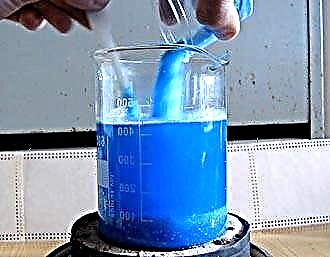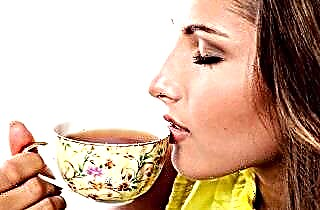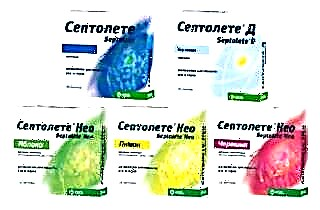Incorrect or untimely treatment of inflammation of the maxillary sinuses in children can lead to serious consequences (impaired vision, hearing, meningitis, etc.). Therefore, if signs of this disease are detected (pain in the area of the maxillary sinuses, headache, yellowish-green discharge from the nose), it is necessary to urgently consult a doctor. After the examination, the specialist will determine the severity of the pathology, establish the symptoms and prescribe the appropriate treatment, which consists mainly of antibiotic therapy.
 Many parents wonder how to treat sinusitis in children without the use of antibiotics. It is possible to avoid the use of potent drugs only if the disease is provoked by a virus and has not yet had time to acquire a purulent character. If the bacteria have already penetrated into the maxillary sinuses, then antibiotic therapy cannot be dispensed with. However, in addition to medication, traditional medicine can also be used to speed up the healing process. Treatment at home must be necessarily agreed with the attending physician, since different folk recipes affect the body in different ways, depending on the stage of development of the disease.
Many parents wonder how to treat sinusitis in children without the use of antibiotics. It is possible to avoid the use of potent drugs only if the disease is provoked by a virus and has not yet had time to acquire a purulent character. If the bacteria have already penetrated into the maxillary sinuses, then antibiotic therapy cannot be dispensed with. However, in addition to medication, traditional medicine can also be used to speed up the healing process. Treatment at home must be necessarily agreed with the attending physician, since different folk recipes affect the body in different ways, depending on the stage of development of the disease.
Rinsing the nose
Rinsing the nose (irrigation therapy) is one of the most common methods of treating sinusitis, not only in stationary (the method of moving fluid according to Proetz), but also at home. This procedure helps prevent stagnation of mucous exudate, promotes its liquefaction and accelerates the process of its elimination from the body. Despite the fact that there are a large number of different recipes for the preparation of medicinal solutions, there are uniform rules - the temperature of the liquid should not be higher than 40 degrees, and the procedure itself is repeated 3-4 times a day, using a syringe without a needle, a syringe or a special kettle ( jala-neti). In addition, it is not recommended to go outside for 30 minutes after washing.
Some experts strongly discourage the use of the first two devices, because when using them, fluid enters the nasal cavity under pressure. Under the influence of a strong jet, there is a risk of pathogenic organisms entering the paranasal sinuses and middle ear. In addition, irrigation with a syringe and syringe should be avoided in young children, as their airways are still in the process of forming. Thus, a special kettle is considered the safest device for washing.
In order to avoid harm and to make the treatment more effective, it is necessary to familiarize yourself with the correct technique of the procedure.
So, before starting the lavage, you need to make sure that the nasal passages are free and the child is breathing relatively freely. Usually, 5-10 minutes before the manipulation, it is recommended to blow your nose well or apply vasoconstrictor drops. Then you need to tilt your head over the bathtub or sink and turn it so that one nostril is higher than the other. Then slowly pour liquid from the teapot into the upper nostril. If everything is done correctly, then the medicinal solution should flow out through the second (lower) nostril, without getting into the mouth. At the end of rinsing, you need to blow your nose well again.
There are many recipes for solutions that are injected into the nasal cavity. Sometimes they even use ordinary boiled water, but in order to achieve an antiseptic and antibacterial effect, it is better to use the following components:
- Food or sea salt (1-1.5 teaspoon per 1 liter of water). You can also use ready-made physiological saline solution.
- Soda (0.5 teaspoon in 1 glass of water). In addition, a combination of soda and salt (0.5 teaspoon per 1 glass of water) with a few drops of iodine helps.
- Furacilin (dissolve 1 tablet in 1 glass of water).
- Propolis. Dissolve 1 teaspoon of table salt in a glass of warm water and add 1 teaspoon of propolis tincture.
- Decoctions of medicinal herbs (St. John's wort, chamomile, eucalyptus, sage, oak bark, string, etc.).
- Ready-made products for rinsing (Humer, Aqua Maris, Dolphin, Aqualor, etc.). When using these drugs, it is imperative to check at what age their use is allowed. If the pressure is too strong, the baby can damage the eustachian tube.
Nasal drops based on natural products
To cure sinusitis in a child, in addition to vasoconstrictor drugs, natural drops are often used, prepared independently on the basis of medicinal plants and vegetable juices. They have a positive effect on the nasal mucosa and promote the outflow of mucopurulent masses. Among the most effective recipes are the following:
- Mix boiled water with flower honey in a 1: 1 ratio. Instill 2-3 times a day, 3 drops in each nostril.
- Mix a tablespoon of black tea with five drops of eucalyptus tincture and half a teaspoon of melted honey. Instill the resulting solution 3 times a day, 2 drops in each nostril.
- 20 minutes after rinsing with saline, add 2 drops of sea buckthorn oil to each nostril.
 Mix in equal proportions freshly squeezed carrot and beetroot juice. Instill 3 drops in each nostril.
Mix in equal proportions freshly squeezed carrot and beetroot juice. Instill 3 drops in each nostril.- In separate glasses, brew St. John's wort (15 g), chamomile (10 g) and marsh caddie (10 g). Let it brew, strain and mix. Instill 3 times a day, 5 drops in each nostril.
In order for the drops to work quickly and bring results in the form of improving the child's condition, you need to learn how to bury them correctly. The child should take a horizontal position, turning over on its side. The drops are injected into the lower nostril. After instillation, the child should remain in this position for about three more minutes (in order for the drops to have a therapeutic effect). Only then can you roll over and repeat the procedure.
It is important to monitor the child's condition - in the absence of breathing relief or increased sinus pain, you should immediately stop using the drops.
Inhalation and warming of the nose
Treatment of sinusitis in children at home is rarely complete without inhalation and warming up. However, parents should know that any types of heating (eggs, buckwheat, bread crumb) are possible only in the early stages of the disease. Warming up the nose with bacterial sinusitis, when purulent exudate accumulates in the sinuses, is fraught with serious complications as a result of a breakthrough of pus. You should also be careful with inhalation, as there is a risk of burning the respiratory tract.
Usually, hot vapors are inhaled over a kettle or saucepan for about 10 minutes, but now there are also special devices (inhalers, nebulizers) that can be used by both adults and children. Among the most effective recipes for steam inhalation are:
- Pour 30 bay leaves with boiling water (1 liter) and cook for 5 minutes over low heat. Then leave to infuse for 50-60 minutes.
- One of the following mixtures of medicinal herbs (plantain, mint, celandine in a ratio of 2: 3: 2; chamomile, millennial, St. John's wort, celandine in a ratio of 2: 3: 1: 1; calendula, eucalyptus, raspberries in a ratio of 1: 1: 3) simmer over low heat for about 5 minutes.
- Add 5-7 drops of essential oil to 1 liter of hot water. Usually, for sinusitis, eucalyptus, fir, pine, tea tree oils are recommended.
Turundy
 Turundas are an effective answer to the question of how to treat sinusitis at home.They help relieve swelling and help destroy disease-causing organisms. In order to make a turunda, you need to twist a piece of gauze or cotton wool in a spiral, then moisten it in the medicinal mixture and insert it into the nose. The size of the turunda is adjustable depending on the size of the child's nostril.
Turundas are an effective answer to the question of how to treat sinusitis at home.They help relieve swelling and help destroy disease-causing organisms. In order to make a turunda, you need to twist a piece of gauze or cotton wool in a spiral, then moisten it in the medicinal mixture and insert it into the nose. The size of the turunda is adjustable depending on the size of the child's nostril.
It is important that the tip of this tampon remains outside so that at the end of the procedure you can easily get it out of the nasal passage.
The following recipes for medicinal mixtures for turunda are considered the most effective in the fight against sinusitis:
- Soak the swabs in sea buckthorn oil and insert into the nose for an hour.
- Brew and insist 2 tablespoons of St. John's wort in a glass of hot water. Leave in the nose for an hour.
- 2 packs of bay leaves for 0.5 liters of boiling water. Cook over low heat for 10 minutes. Insert into nose for 30 minutes 3 times a day.
- Mix a tablespoon of butter, yolk and a small piece of beeswax. Melt all ingredients in a water bath, then strain. Insert tampons into the nose for 20 minutes, 2 times a day.
- Mix one teaspoon of propolis with 50 ml of melted butter and 50 ml of vegetable oil. Insert turundas into the nasal passages for 20 minutes.

 Mix in equal proportions freshly squeezed carrot and beetroot juice. Instill 3 drops in each nostril.
Mix in equal proportions freshly squeezed carrot and beetroot juice. Instill 3 drops in each nostril.

